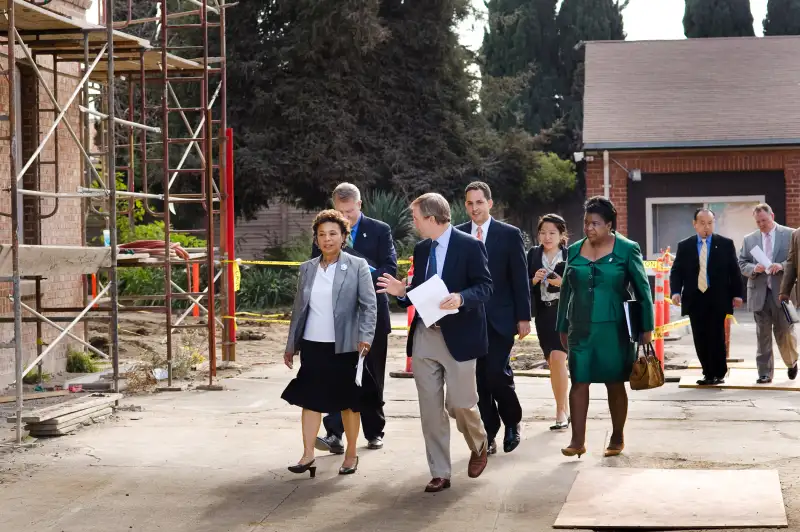Donald Trump's Budget Plan Would Kill a $258 Million Banking Program for the Poor. Here's What it Does.

President Trump reportedly wants to eliminate a $258 million banking program that aids the rural and urban poor in order to help offset $54 billion in increased military spending.
The Community Development Financial Institutions (CDFI) Fund, an arm of the Treasury Department that aids economically distressed localities, will see its funding slashed practically to nothing, according to The New York Times, should Congress adopt Trump's budget for next year. Other governmental programs, such as the Environmental Protection Agency and the Internal Revenue Service, will also have their budgets reduced in an effort to pay for additional military spending.
The proposed cuts, albeit small in scope, follow the Trump administration's reported desire to cut $10.5 trillion in discretionary spending over the next decade, which would essentially eliminate all such spending.
Since defense appropriations count as discretionary, however, it's difficult to see how the math adds up, even after jettisoning whole programs like the CDFI Fund.
Throughout his campaign, Trump said that he would not touch entitlements, such as Medicare, Medicaid and Social Security, which provide health care and monthly income to the nation's poor and elderly. This is a sharp break from Speaker of the House Paul Ryan's (R-WI) desire to effectively cut entitlements in the name of reducing federal spending.
The Budget
The federal government spent $3.9 trillion in 2016, according to the nonpartisan Congressional Budget Office—about $600 billion more than it took in.
Mandatory spending, which includes entitlement programs and interest on the federal debt, consumed about $2.7 trillion. That means the largest share of government spending (69%) will be left alone. Discretionary spending accounted for the other $1.2 trillion, about $600 billion of which was spent on defense, which Trump wants to increase.
The rest—roughly $600 billion, or 15% of all spending—is where the Trump administration is wants to draw blood.
CDFI Fund
The CDFI Fund's budget of $258 million budget, then, is only a fraction of an already small portion of all federal dollars. It costs about $0.79 per American, a useful metric since politicians believe that the federal debt is a yoke passed down to future generations.
So what are you buying with your three quarters and four pennies?
The CDFI Fund runs a number of different programs that encourage investment in poor communities around the country. For instance, the program has doled out $120 million in awards and assistance to various credit unions and loan funds through "Native Initiatives," which helps Native Americans get a mortgage or a small business loan.
Or take the Community First Fund, a Lancaster, Pennsylvania-based nonprofit that tries to help businesses in low-income communities garner financing.The nonprofit received $45 million from the CDFI Fund last year. It helped Ruth Prall receive a $100,000 loan to buy a liquor license and open a wine bar in downtown Harrisburg in 2013.
Another effort is the New Market Tax Credit Program (NMTCP), which provides tax credits to investors who provide capital organizations in low-income communities. Every $1 in tax credits generates $8 in private investment, and the program has helped create or save almost 200,000 jobs since 2003, according to the CDFI Fund.
